A system goes from A to B by two different paths in the P-V diagram as shown in figure Heat given to the system in path 1 is 1100 j, the work done by the system along path 1 is more than path 2 by 150 J. The heat exchanged by the system in path 2 is
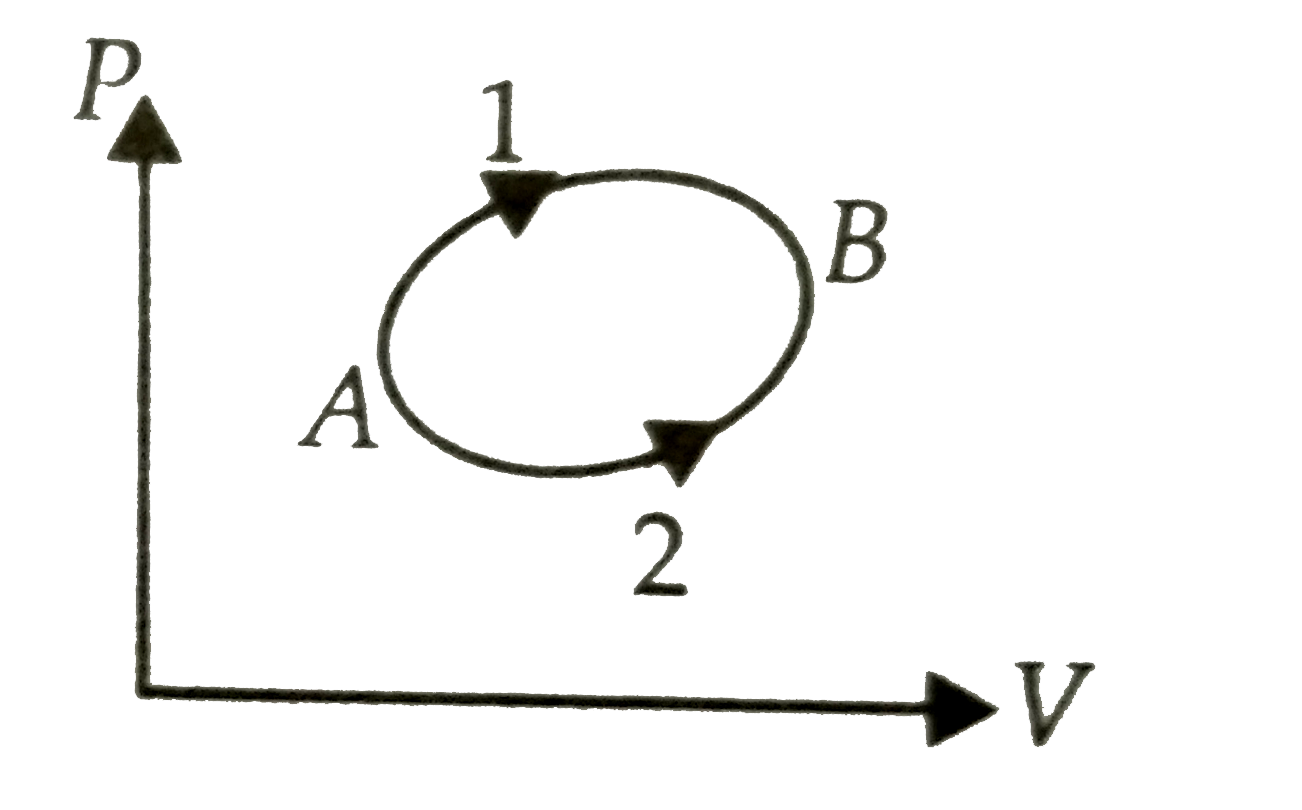
800 J
750 J
1050 J
950 J
The correct Answer is:D
The change in internal inergy of system will be same for both paths 1 and 2 Along path 1, ΔQ1=ΔU+ΔW1
Along path 2,ΔQ2=ΔU+ΔW2
subtract (ii) from (i) we get
or ΔQ1−ΔQ2=ΔW1−ΔW2
1100-ΔQ(2)=150
ΔQ2=11000−150=950J
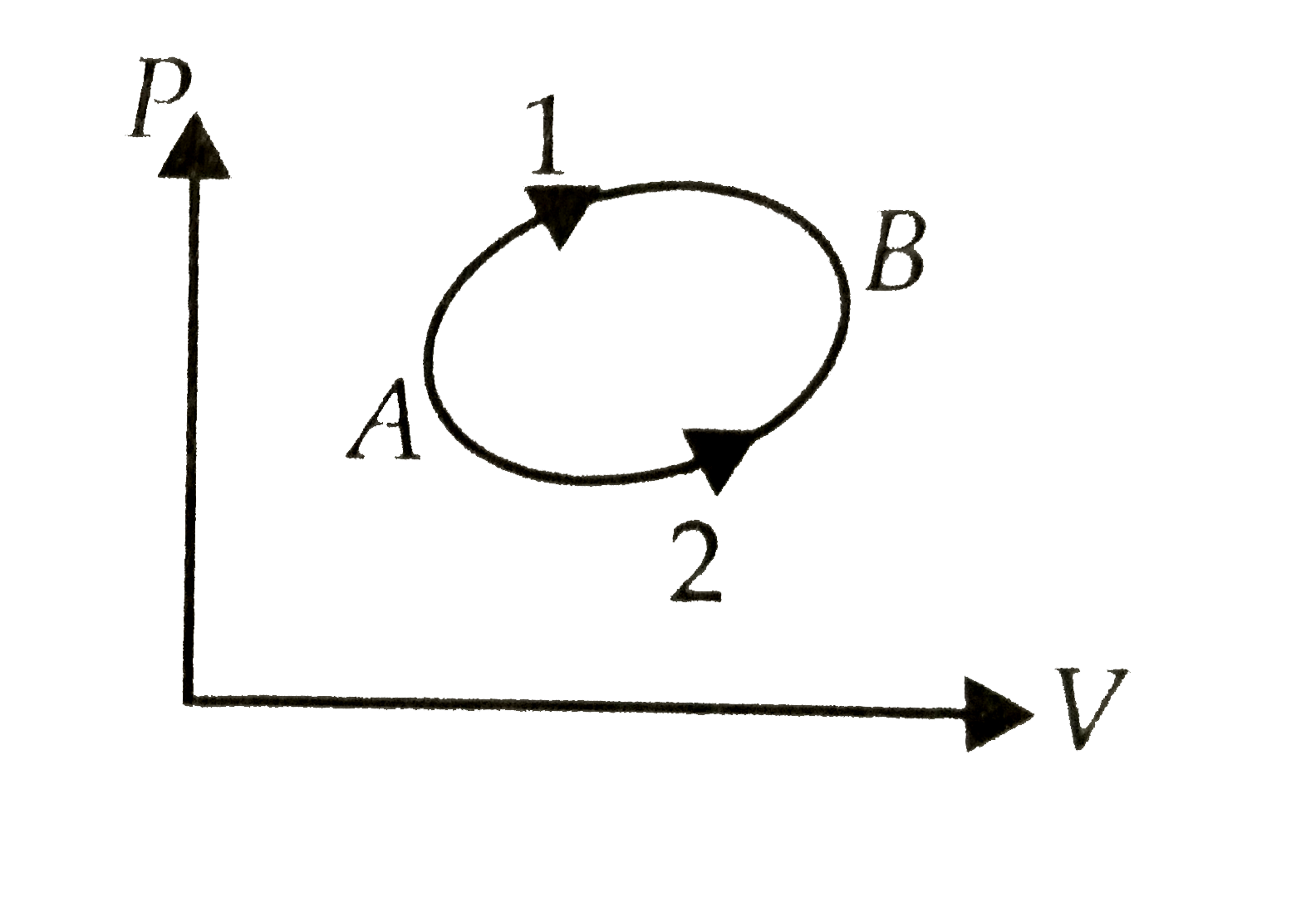
Topper's Solved these Questions
- THERMODYNAMICSBOOK - NCERT FINGERTIPSCHAPTER - THERMODYNAMICSEXERCISE - Specific Heat Capacity
14 Videos
- THERMODYNAMICSBOOK - NCERT FINGERTIPSCHAPTER - THERMODYNAMICSEXERCISE - Thermodynamic State Variables
2 Videos
- THERMODYNAMICSBOOK - NCERT FINGERTIPSCHAPTER - THERMODYNAMICSEXERCISE - Heat, Internal Energy And Work
2 Videos
- THERMAL PROPERTIES OF MATTERBOOK - NCERT FINGERTIPSCHAPTER - THERMAL PROPERTIES OF MATTEREXERCISE - Assertion And Reason
10 Videos
- UNITS AND MEASUREMENTSBOOK - NCERT FINGERTIPSCHAPTER - UNITS AND MEASUREMENTSEXERCISE - Assertion And Reason
15 Videos
Similar Questions
A system goes from P to Q by two different paths in the p−V diagram as shown in figure. Heat given to the system in path 1 is 1000 J. The work done by the system along path 1 is more than path 2 by 100 J. What is the heat exchanged by the system in path 2 ?
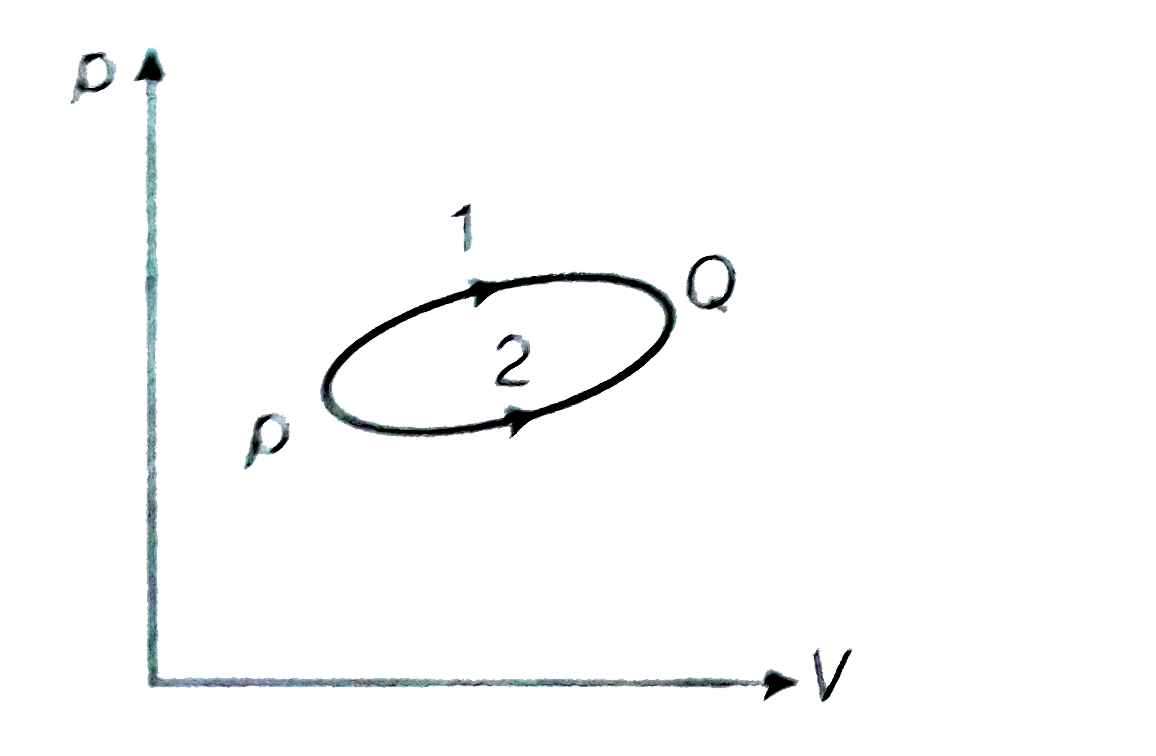
View SolutionA system goes from P to Q by two different paths in the P−V diagram as shown in (figure). Heat given to the system in path 1 is 1000J. The work done by the system along path 1 is more than path 2 by 100J. What is the exchange by the system in path 2?
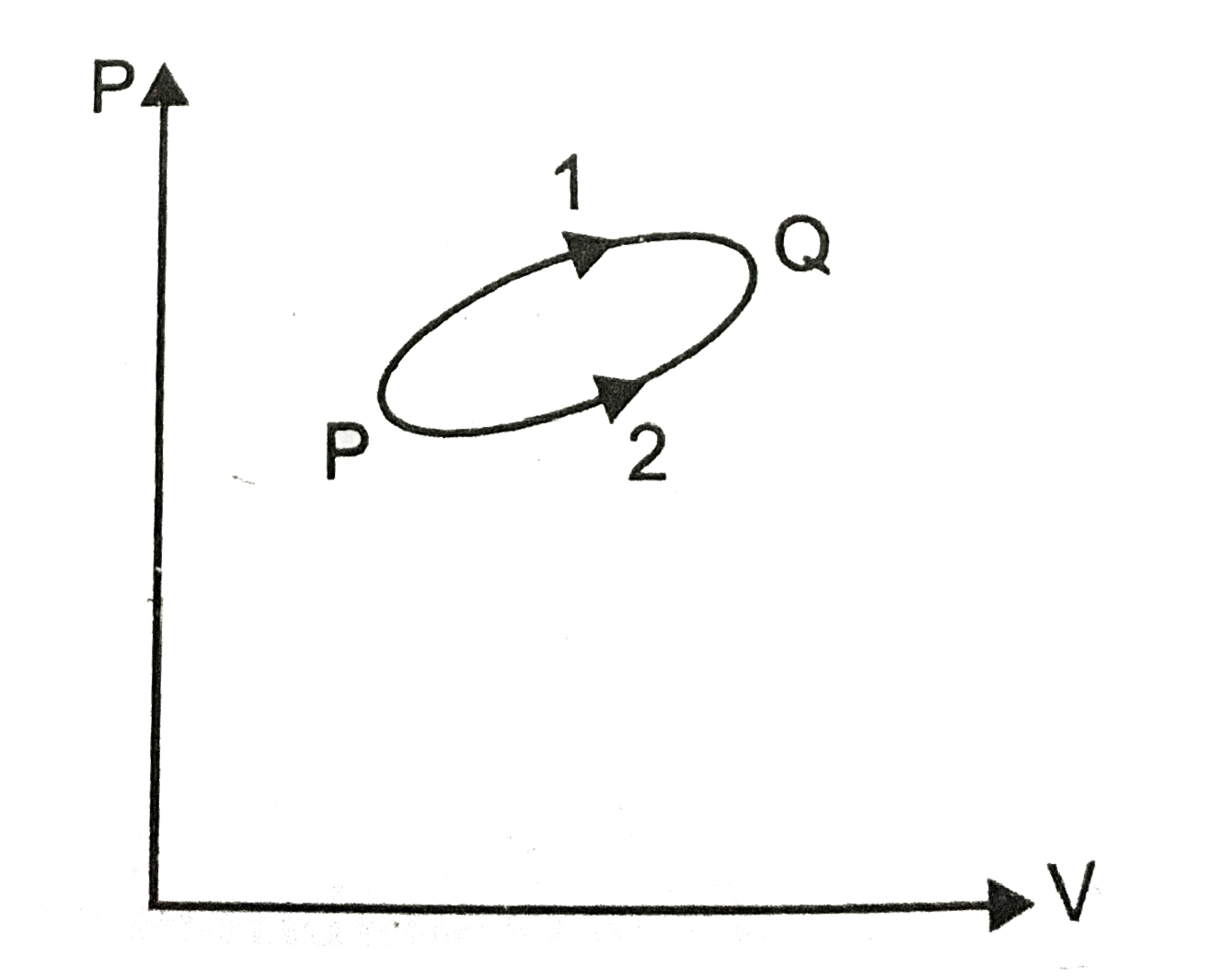
View Solution
Knowledge Check
A system goes from P to Q by two different paths in the P-V diagram as shown in figure. Heat given to the system in path 1 is 1100 J, the work done by the system along path 1 is more than path 2 by 150 J. The heat exchanged by the system in path 2 is
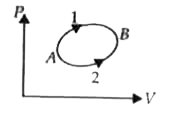 A800 JB750 JC1050 JD950 J
A800 JB750 JC1050 JD950 JWork done by the system in closed path ABCA is
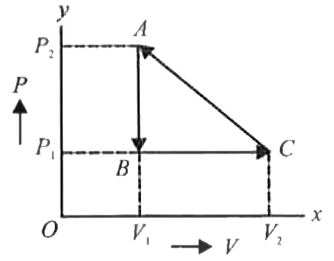 AzeroB(V1−V2)(P1−P2)C(P2−P1)(V2−V1)2D(P2+P1)(V2−V1)2
AzeroB(V1−V2)(P1−P2)C(P2−P1)(V2−V1)2D(P2+P1)(V2−V1)2A gas can be taken from A to B via two different processes ACB and ADB.
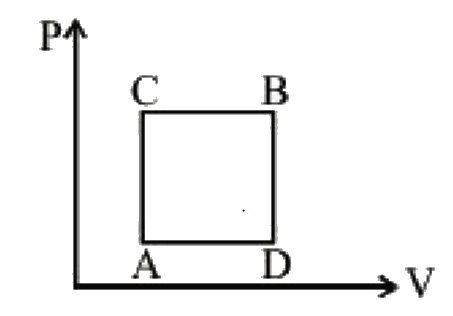
When path ACB is used 60 J of heat flows into the system and 30 J of work is done by the system. If path ADB is used work done by the system is 10 J. The heat Flow into the system in path ADB is:A80 JB20 JC100 JD40 J
A gas can be ken from A to B via two different processes ACB and ADB. When path ACB is used 60 J of heat flows into the system and 30 J of work is done by the system. If path ADB is used work done by the system is 10 J. The heat Flow into the system in path ADB is :

View SolutionAn ideal system can be brought from stage A to B through four paths as shown in the figure. The heat energy given to the system is minimum in :
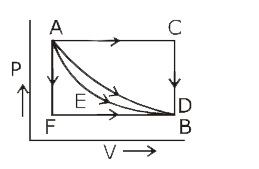
View SolutionWhen a system is taken from stata a to state b along the path acb as shown in figure, 60 J of heat flows into the system and 30 J of work is done by the system. Along the path adb, if the work done by the system is 10 J, heat flow into the system is

View SolutionIn the above question, if the work done on the system along the curved path 'ba' is 52J, heta abosrbed is
View SolutionWork done by the system in closed path ABCA, as shown in figure is
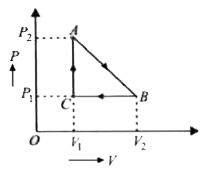
View Solution
